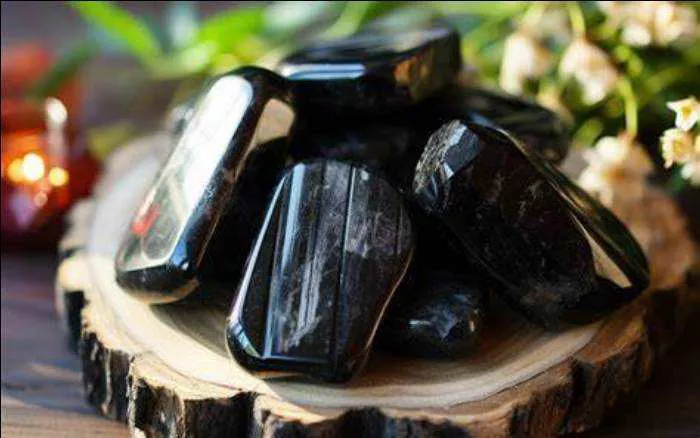Black tourmaline, also known as schorl, is a popular gemstone with a deep black color and strong protective energy. It is widely used in jewelry and healing practices. Many people love this stone for its beauty and metaphysical properties. But where does black tourmaline come from? This article explores the natural sources of black tourmaline around the world.
Black tourmaline forms in igneous and metamorphic rocks. It grows in pegmatites, which are coarse-grained rocks with large crystals. The stone develops under high temperatures and pressures deep within the Earth. Over time, geological processes bring it closer to the surface, where miners can extract it.
Major Sources of Black Tourmaline
Black tourmaline is found in many countries. Some of the most important sources include Brazil, the United States, Africa, and Asia. Each location produces unique qualities of black tourmaline.
Brazil is one of the largest producers of black tourmaline. The country has rich deposits in Minas Gerais. This region is famous for its high-quality gemstones. Brazilian black tourmaline often has a shiny luster and deep black color. Miners extract the stone from pegmatite veins.
The United States also has significant black tourmaline deposits. California and Maine are well-known sources. In California, the Himalaya Mine produced some of the finest black tourmaline specimens. Maine’s pegmatites yield large, well-formed crystals. These stones are popular among collectors.
Africa is another important source of black tourmaline. Countries like Nigeria, Mozambique, and Madagascar have rich deposits. African black tourmaline is often used in jewelry due to its excellent clarity. Madagascar, in particular, produces stones with a sleek, polished look.
Asia contributes to the global supply of black tourmaline as well. Pakistan and Afghanistan have notable deposits. The stones from these regions sometimes exhibit interesting formations. They are highly valued in the gem market.
How Black Tourmaline Is Mined
Mining black tourmaline requires skill and patience. Miners search for pegmatite veins in mountainous areas. They use tools to extract the crystals carefully. The process can be labor-intensive because the stones are often embedded in hard rock.
In some places, miners work in small-scale operations. They dig by hand or with simple machinery. In other regions, larger mining companies use advanced equipment. The goal is to remove the crystals without damaging them.
After extraction, the rough black tourmaline is cleaned and sorted. High-quality pieces are cut and polished for jewelry. Others are sold as raw specimens for collectors. The mining process ensures that the stone reaches markets worldwide.
Uses of Black Tourmaline
Black tourmaline is not just a beautiful stone. It has many practical uses. Jewelry makers use it in rings, necklaces, and bracelets. Its dark color makes it versatile for different designs.
Beyond jewelry, black tourmaline is valued in crystal healing. Many believe it protects against negative energy. People place it in homes or carry it as a talisman. Its grounding properties are highly respected.
The stone is also used in industrial applications. Due to its piezoelectric properties, it can generate an electric charge under pressure. This makes it useful in certain scientific instruments.
Conclusion
Black tourmaline is a fascinating gemstone with a global presence. It forms deep within the Earth and is found in many countries. Brazil, the United States, Africa, and Asia are key sources. Miners extract the stone with care to preserve its natural beauty.
Whether used in jewelry, healing, or industry, black tourmaline remains in high demand. Its deep black color and protective energy make it a favorite among gem enthusiasts. Understanding where it comes from helps us appreciate its value even more.
The next time you hold a piece of black tourmaline, remember the journey it took from the Earth’s crust to your hands. Its natural origins add to its mystique and allure. This remarkable stone continues to captivate people around the world.
Related topics:
- Where is Black Tourmaline Found Naturally?
- How to Identify Real Black Tourmaline: A Complete Guide
- Does Pink Tourmaline Change Color? Exploring the Mystery


